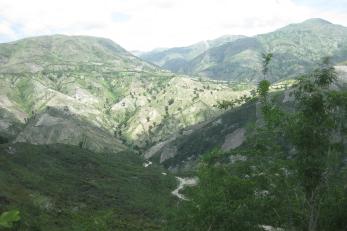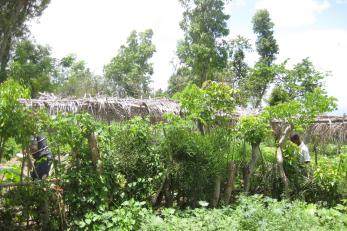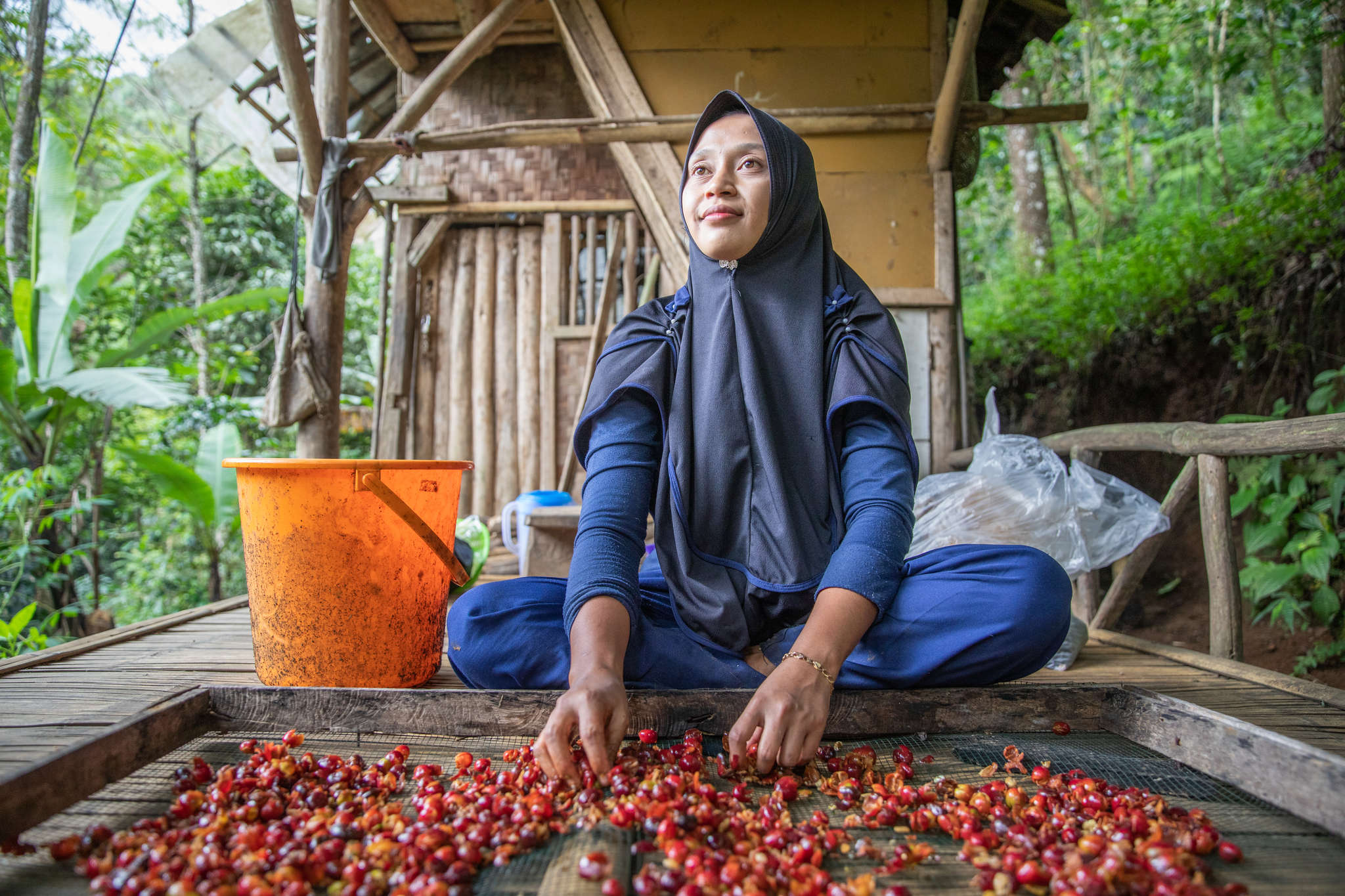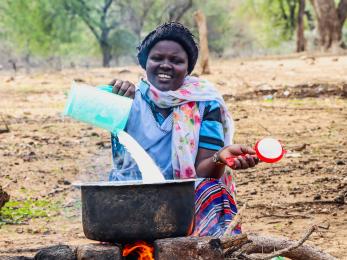Farmers digging deep to repair the land

Haiti is a land stripped bare. Look at the satellite view on Google maps and you will see the stark dividing line between Haiti and the Dominican Republic: where the DR is heavily forested, Haiti is naked.
One obvious consequence of the lack of vegetation is soil erosion. As trees are continually cut down for fires and charcoal production (an activity that is illegal in the DR, which protects their forests), Haiti has suffered severely. We're all aware of the devastation caused by the January, 2010, earthquake in Port au Prince, but most of us don't know about the slow but sure devastation that has resulted from the nearly complete deforestation of the country.
Without trees to protect the land and homes, landslides become more common and earthquakes and hurricanes cause more damage. Without the moisture that trees collect, farmers have a more difficult time growing crops.
I recently visited Mercy Corps’ new Vie, Te & Eneji (Life, Land & Energy) project in the mountains of St. Marc corridor along the coast north of Port au Prince. With funding from the Barr Foundation, it is designed to stop soil erosion, address other environmental concerns, and reinvigorate farmers by enabling them to increase crop yields.
Working with two local organizations, Mercy Corps identified about 15 team leaders in each of the targeted communities and trained them in some fairly simple prevention techniques. Those leaders then organized teams of land owners who are paid a small stipend to do the work (if they can't work on an assigned day, they must send a substitute, usually a family member). They get paid for some of the days but also donate some, so that the community contribution to the larger project is about 40%.
Using a simple wooden ‘A’ frame to determine the contour of the land, farmers mark erosion control lines with pegs along the hillsides. They then build short rock barriers, about 18 inches high, across the hillsides. The soil is rich but rocky, so building the walls not only helps stop erosion, but also clears the fields for better planting.
Where there are already few rocks, they dig parallel ditches, fill them with waste plant material and cover them with dirt. These swales will collect water runoff and disperse it through the ground.
The next step is planting trees, shrubs and grasses by the rock walls to further enrich and protect the soil. This introduces some higher value crops (citrus, mangoes, etc.) that will help increase incomes for the farmers.

As you can imagine, this is not easy work. These are mountains — and they are steep! One misstep and you're halfway to the valley floor. But these hardworking farmers finish one plot and move on to the next. It's a bit like an old-fashioned barn-raising, neighbor helping neighbor, but in this instance, there is an even larger direct benefit for all.
The initial project is funded for two years, but many of the trees will take five years to mature and to provide the soil conservation benefits and fruit to eat and sell; the full effects won't be felt for many more years still.
But the project’s long-term outlook doesn’t preclude quick progress. The amount of work done and the area covered in just a few months is mind-boggling to behold. All I could think about was how sore my back would be doing that work. These farmers are enthusiastic and ambitious, though, and through their sweat, they will be seeing some very tangible rewards.


